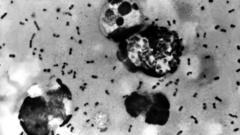In a groundbreaking genetic study, researchers have mapped the history of 214 human diseases in Europe and Asia over the last 37,000 years. Amid ongoing global health concerns, this extensive research seeks to draw lessons from the past to understand and combat future pandemics. It reflects on the significant historical gaps in our understanding of ancient diseases. For instance, despite detailed observations recorded by Thucydides about an epidemic in 430 B.C. Athens, the specific pathogen remains unidentified.
Over the last thirty years, advances in genetics have allowed scientists to identify pathogen DNA in human remains, significantly illuminating this historical medical mystery. The recent study, published by a team of scientists examining 1,313 ancient individuals’ remains, offers more than just a timeline of diseases; it highlights their evolution and fluctuating prevalence throughout history.
Among the oldest remains studied were those of hunter-gatherers, which contained traces of ailments like hepatitis B, herpes virus, and Helicobacter pylori, linking these ancient peoples to diseases still relevant today. As further research unfolds, the mapping of these ancient pathogens could be crucial in our ongoing battle against emerging diseases.
Over the last thirty years, advances in genetics have allowed scientists to identify pathogen DNA in human remains, significantly illuminating this historical medical mystery. The recent study, published by a team of scientists examining 1,313 ancient individuals’ remains, offers more than just a timeline of diseases; it highlights their evolution and fluctuating prevalence throughout history.
Among the oldest remains studied were those of hunter-gatherers, which contained traces of ailments like hepatitis B, herpes virus, and Helicobacter pylori, linking these ancient peoples to diseases still relevant today. As further research unfolds, the mapping of these ancient pathogens could be crucial in our ongoing battle against emerging diseases.














